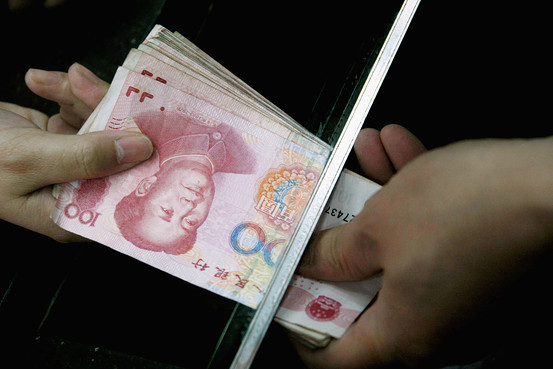In early December the U.S. Department of the Treasury reported that for the first six months of 2004 no major trading partner country had manipulated its currency to gain an unfair trade advantage. The report is required under the Omnibus Trade and Competitiveness Act of 1988. While the focus of the media attention was on China’s fixed exchange rate in relation to the U.S. dollar, the report commented on monetary policy for most of our major trading partners. In a world of increasing economic integration through trade, domestic monetary policy cannot be separate from trade policy.
China has maintained a fixed exchange rate of 8.28 renminbi to the U.S. dollar since 1995. They have held to that rate in both good and bad economic times. In the late 1990s, the Chinese government decided not to devalue when countries around them were devaluing in hopes of regaining a competitive advantage in world trade. The ten years of stability have provided foreign investors the assurance that assets would not lose value through a change in monetary policy.
From the mid-1940s through the 1960s a fixed exchange rate would not have been unusual. Delegates from 44 countries met in Bretton Woods, New Hampshire in July of 1944 to establish post-war economic policies which became known as the Bretton Woods Agreement. The agreement included a set of fixed exchange rates in terms of gold. Those policies facilitated rapid economic growth in the 1950s and 1960s in Western Europe and the United States. The exchange rate system came under strain in the late 1960s due to increasingly divergent economic and monetary policies. It collapsed in 1971 when the United States suspended convertibility from dollars to gold.
The stability provided by fixed exchange rates usually causes policy makers to forget the importance of other economic policies. If all countries pursued similar economic and monetary policies, fixed exchange rates could last indefinitely. But, countries seldom follow similar policies. When Argentina had a policy of fixing its peso to a one-to-one relationship to the U.S. dollar, it did not follow similar economic policies as the United States. Argentina broke the fixed relationship in 2001, and in June of this year the Argentine peso was trading at 2.96 pesos to the U.S. dollar.
Of the 14 major economies reviewed in the Treasury report, only China and Malaysia have fixed exchange rates; both are pegged to the U.S. dollar.
Moving from a fixed exchange rate to a flexible market-based one is not pain free. Those industries that have been protected by the fixed rate have difficulty adjusting. Foreign investors who were attracted by the fixed rate must add currency risk to their risk management efforts to findtramadol online pharmacy. Some analysts have speculated that up to half the banks in China would be in financial difficulty under a flexible market-based exchange rate.
Making needed adjustments when the economy is strong, as is the current situation in China, is far better than going to a flexible currency when the economy is in a shambles, as Argentina did in 2001. Some U.S. vegetable growers will recall the trade adjustments caused by Mexico 10 years ago as the peso lost about 50 percent of its value over a couple of weeks time.
The Treasury report provides some fundamental concepts for monetary policy. In discussions with leaders of other countries, Treasury promotes “a flexible market-based exchange rate combined with a clear price stability goal and a transparent system for adjusting policy instruments.” A flexible market-based exchange rate only makes sense when it is tied to a sound monetary goal (price stability) and is carried out a manner that market participants can understand (a transparent system).
The United States’ experiences on both issues point out how difficult this process can be to accomplish. Monetary policy decision makers went through a series of misadventures from the late 1960s through the mid-1980s before defining price stability as the primary goal of monetary policy. The last 20 years have been spent evolving a system that makes Federal Reserve Board policies relatively transparent for market participants.
For China to make a smooth transition to a flexible market-based exchange rate, it would need to have price stability as a goal and a decision making process that can be understood by market participants. Given the size of their economy and their steep learning curve on moving from government secrecy and control to open economic policies, China is likely not ready to move to a flexible market-based exchange rate.
Despite the shortcomings of the existing fixed relationship of the Chinese renminbi to the U.S. dollar, the system is preferable to having a Chinese monetary policy with no clear goal and a decision making process that leaves market participants in the dark about what actions are being taken. Chinese government officials have indicated they are aware that monetary policy must change at some point in the future. The challenge is to make those changes with enough openness so that market participants can understand the impacts of policy changes. Anything less would be a huge step backward for China and all of its trading partners.
While monetary policy cannot be written into trade agreements, it also cannot be ignored. The Bretton Woods Agreement recognized the link between monetary and trade policies. Policy makers in national governments need to recognize the link and strive to have economic policies, monetary policies and trade policies that work together in a market economy.

